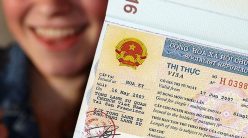Chapter 1: OVERVIEW OF TRADEMARKS AND GEOGRAPHICAL INSTRUCTIONS (Last part)
- An overview of geographical indications
- Protection conditions and grounds for establishing rights to geographical indications
Protection of geographical indications means that the State, functional agencies and entities, through the legal system, conduct activities related to the establishment, exploitation, management and protection of subjects. against infringements of rights to geographical indications. A geographical indication is protected when the following conditions are met:
“first. Products bearing a geographical indication originate from the region, locality, territory or country corresponding to the geographical indication.
- Products bearing a geographical indication whose reputation, quality or characteristics are mainly determined by the geographical conditions of the region, locality, territory or country corresponding to such geographical indication.”
The following objects are not protected as geographical indications:
– Names and indications have become common names of goods in Vietnam. Specifically, in the case of geographical indications: Cognac, Whiskey, Vodka (for alcohol products) are place names of France, England and Russia but have become common names of goods, losing the ability to indicate local origin. and are not protected as geographical indications.
– A geographical indication of a foreign country in which the geographical indication is not protected, has been terminated or is no longer used.
– A geographical indication that is identical or similar to a protected mark, if the use of such geographical indication is made, it will cause confusion about the origin of the product trademark registration.
– Geographical indications mislead consumers about the true geographical origin of products bearing such geographical indications.
Industrial property rights to geographical indications are established on the basis of decisions on grant of protection titles by competent state agencies according to prescribed registration procedures or recognition of international registrations in accordance with regulations of law. international treaties to which the Socialist Republic of Vietnam is a signatory.
- Owners and registration rights of geographical indications
2.1 Owners of geographical indications
The owner of geographical indications in the territory of Vietnam is the State. The State grants the right to use geographical indications to organizations and individuals to manufacture products bearing geographical indications in their respective localities and put those products on the market. The State directly exercises the right to manage geographical indications or grants the right to manage geographical indications to organizations representing the interests of all organizations and individuals that are granted the right to use geographical indications.
2.2 Right to register a geographical indication
The State is the owner of geographical indications in the territory of Vietnam, therefore, the right to register geographical indications of Vietnam belongs to the State. The State allows organizations and individuals producing products bearing geographical indications, collective organizations representing such organizations and individuals or the local administrative management agencies where such geographical indications are located. the right to register a geographical indication. The person who exercises the right to register a geographical indication does not become the owner of that geographical indication. A geographical indication protection title is granted to the person who exercises the right to register a geographical indication mark. In particular, the protection document records the organization managing the geographical indication, the organizations and individuals that have the right to use the protected geographical indication, the geographical indication, the specific characteristics of the products bearing the geographical indication, and the specific characteristics of the products bearing the geographical indication. geographical indication, the specific nature of geographical conditions and the geographical area bearing the geographical indication.
- Contents, limitation of rights and term of protection for geographical indications
3.1 Contents of protection for geographical indications
As stated in Section 1.2.3, the State directly exercises the right to manage geographical indications or confers the right to manage geographical indications to an organization representing the interests of all organizations and individuals authorized to do so. use geographical indications. In which, organizations and individuals that are granted the right to use and manage geographical indications by the State have the following rights:
– Organizations granted the right to manage geographical indications have the right to permit other people to use such geographical indications according to the provisions of Point a, Clause 1, Article 123 of the 2005 Intellectual Property Law. Specifically, the act of allowing people to use such geographical indications. Other uses of geographical indications include:
+ Allowing others to attach the protected geographical indication to goods, goods packaging, means of business, transaction papers in business activities;
+ Allowing others to circulate, offer for sale or advertise for sale, or store for sale goods bearing protected geographical indications;
+ Allowing others to import goods bearing a protected geographical indication.
– Organizations and individuals that are granted the right to use or organizations that are granted the right to manage geographical indications have the right to prohibit other people from using such geographical indications according to the provisions of Point b, Clause 1, Article 123 of the Intellectual Property Law. In particular, organizations and individuals that are granted the right to use or manage geographical indications have the right to prohibit other people from using geographical indications if such use does not fall into the following cases:
+ Circulating, importing and exploiting the uses of products that are legally put on the market, including foreign markets, except for products not registered by the trademark owner or an authorized person of the company. the owner registers the mark to put it on the foreign market;
+ Using a mark identical to or similar to a protected geographical indication if that mark has obtained protection in good faith before the date of filing the application for registration of such geographical indication;
+ To honestly use names of people, signs describing the type, quantity, quality, utility, value, geographical origin and other characteristics of goods and services.
In addition, the law also provides that the following acts are considered infringing upon the right to protected geographical indications:
“a) Using a protected geographical indication for a product that, although originating from the geographical area bearing the geographical indication, does not meet the specific quality and nature standards. characteristics of products bearing geographical indications;
- b) Using a protected geographical indication for products similar to those bearing the geographical indication for the purpose of taking advantage of the reputation and prestige of the geographical indication;
- c) Use of any sign identical or similar to a protected geographical indication to a product that does not originate from the geographical area bearing that geographical indication, misleading consumers that the product has originating in that geographical area;
- d) Using a protected geographical indication for wines, spirits for wines, spirits not originating from the geographical area corresponding to such geographical indication, even if it is indication of the true origin of a good or a geographical indication used in translation, transliteration, or accompanied by the words type, type, form, adaptation or similar words. “
3.2 Restriction of rights to geographical indications
Limitations on the ownership of a geographical indication do not arise from an obligation to use or a right to prior use. Limitation on ownership of geographical indications is mainly in the provisions on the transfer of industrial property rights for geographical indications. Specifically: Industrial property rights to geographical indications are not transferable. Because geographical indications are simply considered as a national property, the owner of geographical indications in the territory of Vietnam belongs to the State of Vietnam. The organization granted the right to manage the geographical indication does not have the right to dispose of the geographical indication, therefore, the geographical indication cannot be transferred to any other organization, individual or country. In addition, for individuals and organizations that are allowed to use geographical indications, such individuals and organizations cannot transfer their use rights to any other third parties.
3.3 Term of geographical indication protection
A geographical indication registration certificate is valid indefinitely from the date of issue. However, geographical indications are not always protected in perpetuity, the certificate of registration of trademarks of geographical indication products can still be terminated. The inevitable consequence is that the geographical indication is no longer protected. A certificate of registration of trademark registration of a geographical indication product will be terminated in the following cases: The geographical conditions that create the reputation, quality and characteristics of the product bearing the geographical indication are changed. change the reputation, quality and characteristics of that product. This is a very reasonable regulation because the basic protection condition of a geographical indication is that the product bearing the geographical indication has a reputation, quality or characteristics mainly due to the geographical conditions of the region, locality, the territory or country corresponding to the geographical indication to decide.
For support and advice on intellectual property issues in the best way, please contact us with the following information:
DHP LAW
Address: L4-09.OT06 Landmark 4 Vinhomes Building Central Park, 720A Dien Bien Phu, Ward 22, Binh Thanh District, Ho Chi Minh City








